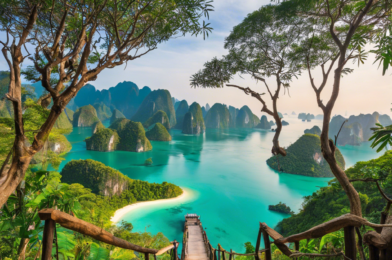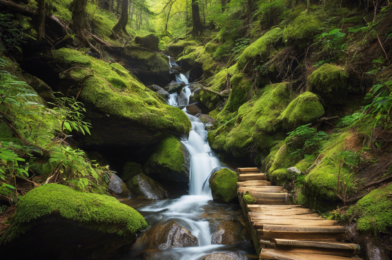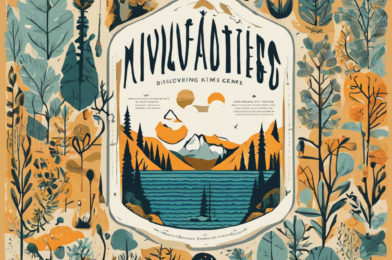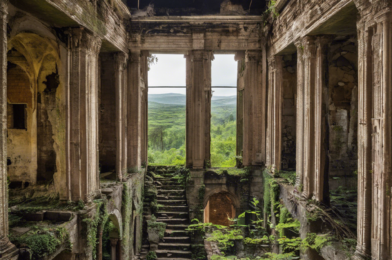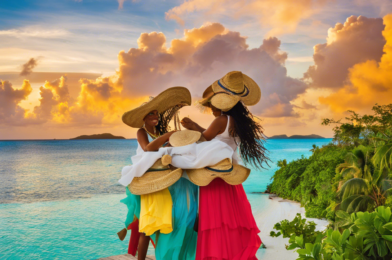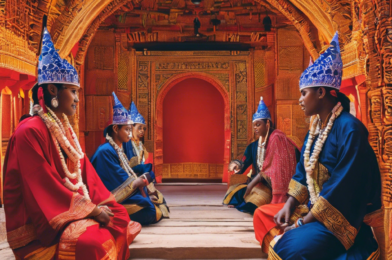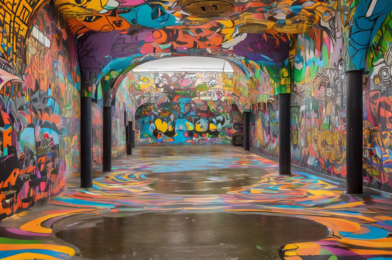Stargazers and astronomers have long sought secluded places to study the cosmos, far from the light pollution of cities. Hidden astronomical observatories, often nestled in remote locations, offer a chance to explore the universe from scientific outposts equipped with powerful telescopes and cutting-edge technology. These observatories provide an unparalleled opportunity to delve into the mysteries of the universe, capturing breathtaking images and making groundbreaking discoveries.
One such observatory, the Atacama Large Millimeter/submillimeter Array (ALMA), is located in the Atacama Desert of northern Chile. This arid region, known for its clear skies and high altitude, presents an ideal setting for observing the heavens. ALMA comprises 66 antennas that work in unison to study the universe in millimeter and submillimeter wavelengths. By doing so, it unveils otherwise invisible cold gas and dust in distant galaxies, providing insights into the early universe and the formation of stars and planets.
Mauna Kea Observatory in Hawaii also boasts a remarkable astronomical outpost. Perched atop a dormant volcano, Mauna Kea offers a unique vantage point for stargazing. Its summit rises above the clouds, providing unobstructed views of the night sky. The observatory is home to some of the world’s most advanced telescopes, including the Subaru Telescope and the Gemini North Telescope. These instruments enable astronomers to peer deep into the cosmos, studying distant galaxies, examining extrasolar planets, and unraveling the mysteries of dark matter and dark energy.
Then there’s the Paranal Observatory, another Chilean outpost located in the Atacama Desert. This hidden astronomical gem is home to the Very Large Telescope (VLT), one of the world’s most sophisticated optical instruments. The VLT consists of four large telescopes that work together as a single unit, capable of capturing incredibly detailed images of celestial objects. By combining the power of these telescopes, astronomers can study distant stars, exoplanets, and even the faint glow of the cosmic dawn—the period soon after the Big Bang when the first stars and galaxies formed.
In addition to these renowned observatories, there are countless other hidden astronomical outposts scattered around the globe. Each offers a unique perspective on the universe, contributing to our understanding of its vast expanse. These remote locations provide not just incredible views but also the necessary conditions for groundbreaking research. By escaping the light pollution and distractions of urban areas, astronomers can delve deeper into the cosmos, pushing the boundaries of science and human understanding.
The journey to these observatories is often an adventure in itself, involving steep climbs, rugged terrain, and sometimes even altitude acclimatization. Yet, the rewards are immeasurable. From the majestic peaks of the Andes to the secluded Hawaiian volcanoes, these locations provide an unparalleled opportunity to explore the universe in all its glory. The dedication of astronomers and the cutting-edge technology they employ at these outposts have unveiled countless celestial wonders and expanded our comprehension of the cosmos.
Moreover, these hidden astronomical observatories significantly contribute to astronomy and astrophysics. By collecting data and images from distant celestial objects, scientists can study various astronomical phenomena, such as supernovae, black holes, and distant galaxies. This helps in understanding the evolution of the universe, the life cycle of stars, and the formation of planetary systems, leading to groundbreaking discoveries and a deeper appreciation of our place in the cosmos.
The importance of dark skies and minimal light pollution cannot be overstated in the field of astronomy. As light pollution from cities increases, it becomes increasingly difficult for astronomers to observe the night sky. This is where these hidden observatories play a crucial role. They are typically located in remote areas, far from artificial light sources, ensuring that the night sky remains pristine and ideal for observation. Efforts are also being made to preserve and protect these dark sky sites, recognizing their scientific and ecological significance.
In conclusion, hidden astronomical observatories offer a unique opportunity to explore the cosmos from remote locations, free from the light pollution that hinders urban skywatching. With powerful telescopes and dedicated researchers, these outposts contribute significantly to our understanding of the universe. They not only provide breathtaking visuals of distant celestial bodies but also unlock the secrets of the early universe, the formation of stars and planets, and the fundamental nature of the cosmos. For astronomy enthusiasts and professionals alike, these secluded observatories represent a fascinating intersection of science and exploration.



